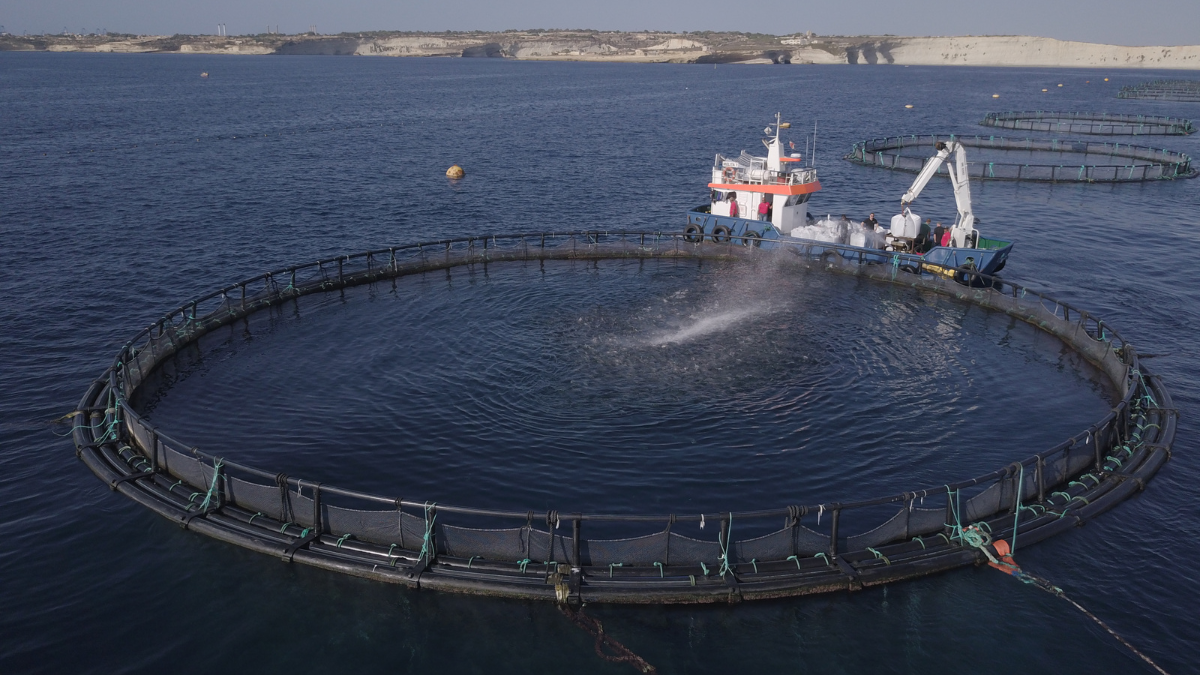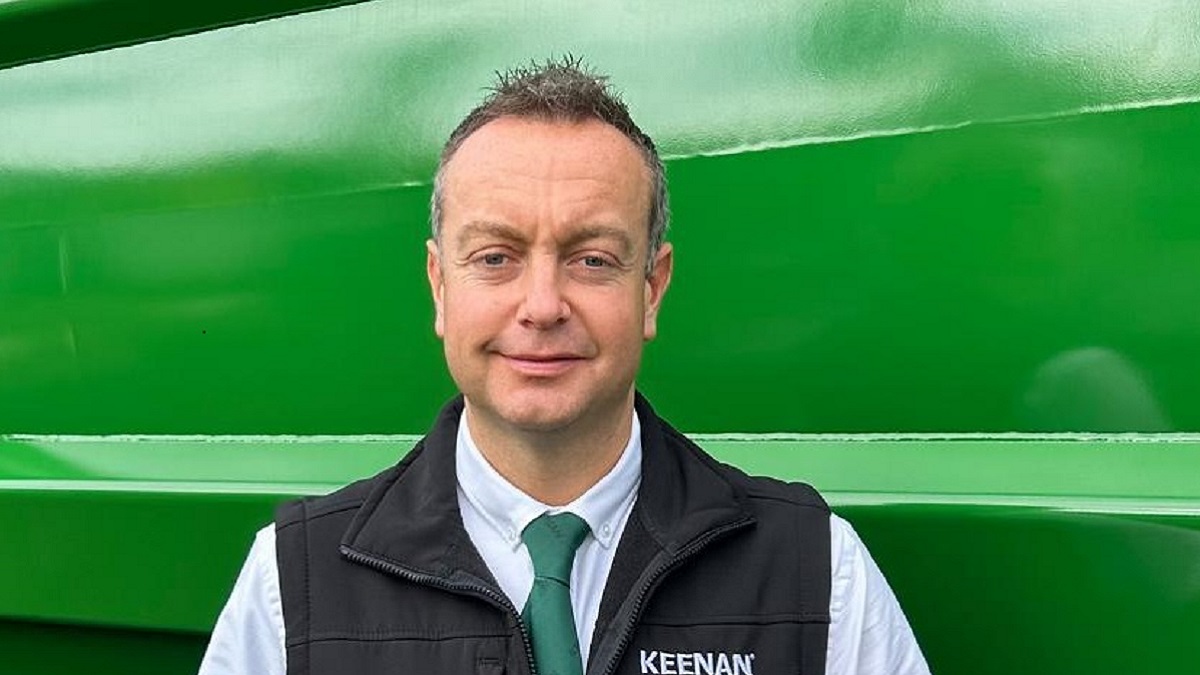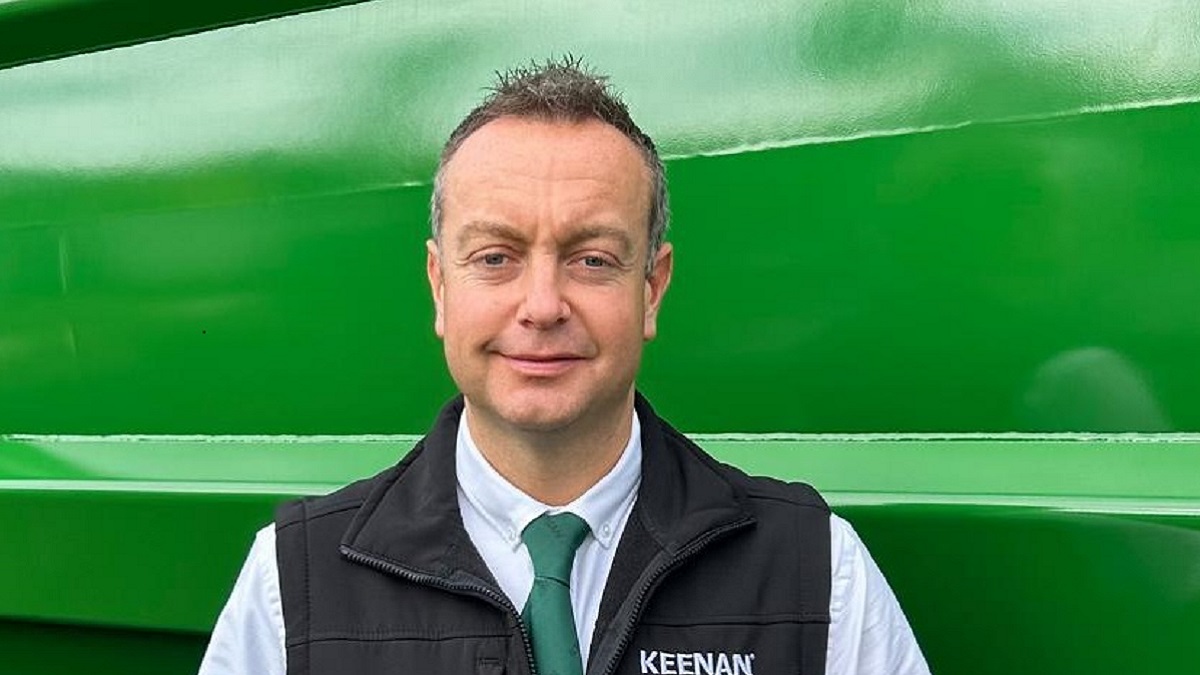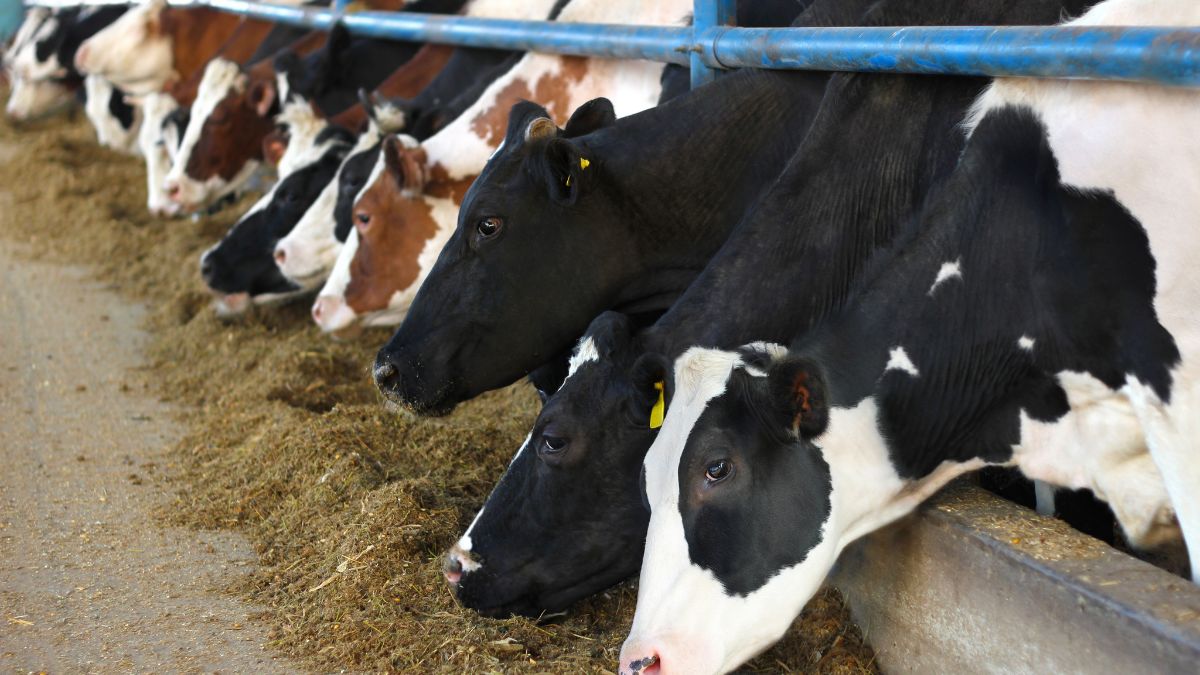Family Dairy Day
Fishback Soccer Complex, South Dakota, USA

North America

Europe

Latin America

Asia Pacific

Africa

Middle East
Fishback Soccer Complex, South Dakota, USA
APTA Regional Colina/SP (Fazenda do Governo), Colina, Brazil
Rice County Fairgrounds, Rice County, Minnesota, USA
Castrolanda Expo Center Parque de Exposições Dario Macedo, Castro, Paraná, Brazil
Olavo Fontoura Avenue, 1209, São Paulo, Brazil
Armazém Areado, Lajinha, Brazil
Una nueva serie de seis videos explora el ciclo del carbono durante el pastoreo y el papel del ganado en la mitigación del cambio climático.
Los resultados de la alianza de investigación Archbold-Alltech confirman los beneficios ambientales de los rumiantes en pastoreo.
Alltech y Archbold formaron una alianza estratégica de investigación en 2019 para desarrollar conjuntamente enfoques de manejo del ganado de carne, específicamente para aumentar la calidad y la cantidad de carne producida en regiones subtropicales mientras se mantiene y mejora el medio ambiente. La alianza Archbold-Alltech reunió a científicos de dos disciplinas diferentes, ecólogos de Archbold y nutricionistas de Alltech, para comprender el impacto que tiene la producción ganadera en la finca Buck Island de Archbold en el ecosistema y la capacidad de secuestrar carbono.
En los últimos cinco años, la alianza de investigación ha creado un modelo para estimar la huella de carbono del rancho, y los resultados han sido asombrosos. En promedio, Buck Island secuestra más carbono cada año del que emite.
Para mostrar el trabajo que se está llevando a cabo en Buck Island, la alianza Archbold-Alltech ha lanzado una serie de seis videos Planeta de Abundancia™ que explora el ciclo del carbono en las fincas con ganado en pastoreo y el papel que representa el secuestro de carbono en la mitigación del cambio climático, entre otros.
"Esta alianza de investigación reúne a científicos de varias disciplinas para colaborar en soluciones al cambio climático y demostrar el gran potencial de la ganadería para impactar de forma positiva el futuro de nuestro planeta", dijo Dr. Mark Lyons, presidente y CEO de Alltech. "Estos emocionantes hallazgos en Buck Island demuestran que capturamos más carbono cuando las vacas pastan en la tierra. Eso es profundamente poderoso".
"Cada año, secuestramos 1201 toneladas de CO2 equivalente en Buck Island, y todo este trabajo es extensible a otras partes del mundo", dijo la Dra. Betsey Boughton, directora de agroecología de Archbold. "La narrativa que la gente ha escuchado es que las vacas son malas para el medio ambiente, pero los animales en pastoreo pueden cambiar la función de los pastizales. Las vacas comen la pasto y no permiten que se produzca tanta descomposición en el suelo. Sin vacas, en realidad, vemos más emisiones de carbono".
Aunque se trata de un tema complejo, la investigación ha demostrado que la ganadería puede ser una de las armas más poderosas en la lucha contra el cambio climático.
Esta colaboración ha descubierto una comprensión más profunda del ciclo del carbono cuando el ganado pasta, que no se centra únicamente en las emisiones de gases de efecto invernadero (GEI) del animal, sino también en las emisiones naturales de GEI de la tierra y el secuestro de carbono en el suelo. Las discusiones sobre los gases de efecto invernadero y el calentamiento global a menudo se centran en las emisiones ganaderas, pero es importante pensar más allá de las emisiones y mirar el ciclo completo.
Alltech Crop Science e Ideagro, que se unió a la familia de empresas Alltech en 2023, están estudiando cómo las poblaciones microbianas pueden enriquecer la química del suelo y la densidad de nutrientes, lo que conduce a un mayor secuestro de carbono en el suelo. El potencial de capturar carbono en el suelo presenta una oportunidad significativa para que la comunidad agroalimentaria asuma su papel fundamental en la lucha contra el cambio climático y, al mismo tiempo, mejore la salud del suelo, aumente el rendimiento de los cultivos y promueva la biodiversidad.
In aquaculture, maintaining proper fish health is crucial to avoid incurring significant economic losses. While gut health often takes center stage, the skin and gills are also critical first lines of defense. This blog explores the potential of functional feed materials — particularly the refined form of mannan oligosaccharides, the mannan-rich fraction (MRF) — to enhance those defenses. Discover the science behind these innovations and their practical benefits for a more sustainable aquaculture industry.
Prebiotics are generally included in aquafeed formulations as functional feed materials to help support normal immune functions and enhance nutrient absorption, digestion and, ultimately, the animal’s performance. Gibson and Roberfroid (1995) defined a prebiotic as “an indigestible fiber that can enhance the growth and activity of health-promoting bacteria in the intestine and beneficially affect the host.” Along with their ability to effectively outcompete pathogenic bacteria and discourage adhesion, these health-promoting bacteria can also ferment prebiotic substrates, resulting in the production of short-chain fatty acids, which helps boost intestinal functions by increasing mucus and also affects the immune response (Fatima and Mansell, 2019).
While much research has focused on the effects of prebiotics on fish gut health, other mucosal surfaces — such as the skin and gills — are often overlooked. Nevertheless, skin and gills also act as a critical first line of defense for a fish’s overall health, as these large surface areas are exposed to the aquatic environment and, therefore, serve as primary targets for pathogen attachment and invasion in finfish. The mucus layer covering the epidermal and gill epithelial surfaces is not just a physical barrier; it contains potent immunologically active molecules, underlying mucosa-associated lymphoid tissue elements and microbiota, which facilitate the development and homeostasis of the host fish’s immunity (Cabillon and Lazado, 2019). However, under stressful fish farming conditions (e.g., high stocking densities, fluctuating temperatures in open systems due to climate change), a disruption of the symbiotic host-microbiome relationship can lead to significant changes in the microbiota structure — which favors the growth of opportunistic pathogens (Debnath et al., 2023).
Disease outbreaks in aquaculture stem from complex interactions between fish hosts, farming conditions and pathogens (Figure 1; adapted from Moreira et al., 2021). These outbreaks can lead to welfare challenges for animals and financial losses for producers. Bacterial and parasitic agents cause severe, unpredictable and difficult-to-treat infections on the skin and gill surfaces. For example, the parasitic copepod Lepeophtheirus salmonis, which is responsible for sea lice infestations in salmon farms that cause skin wounds and secondary infections, significantly impacted revenues and led to financial losses estimated at US$436 million for the Norwegian industry in 2011 (Abolofia et al., 2017). As aquaculture evolves, sustainable disease management strategies will be required to protect animal welfare, health, the environment and the producer’s profitability (Lieke et al., 2020)
Figure 1. The main factors influencing the interactions between pathogens, hosts and the farming environment in fish disease outbreaks.
According to Bondad‐Reantaso et al. (2023), since the European ban on subtherapeutic antibiotics in animals, including fish, mannan oligosaccharides have become a primary alternative strategy for disease management in aquaculture. Mannan-rich fraction (MRF), the refined version of mannan oligosaccharides is characterized by α-(1,2)- and α-(1,3)-D-mannose branches connected to extended α-(1,6)-D-mannose chains (Hu et al., 2024). Alltech’s MRF is derived from the cell wall of a select strain of Saccharomyces cerevisiae, and is among the most-studied functional feed materials in farmed animals (Spring et al., 2015). Research findings support MRF’s protective role against various health challenges in skin and gills across different fish species, including salmonids (salmon and trout), freshwater species (catfish and tilapia), marine species (greater amberjack) and ornamental fish (goldfish). Some of those key findings are summarized in Table 1.
Feeding trials without pathogenic challenges have already shown the potential of MRF to support normal functions of the mucosal immune barrier. In a study of rainbow trout, skin mucus production increased after 12 weeks of feeding MRF (Rodriguez-Estrada et al., 2013), and in studies in goldfish (Huang et al., 2022; Liu et al., 2024), longer gill lamellae, greater thickness of the dermal dense layer of skin, the number of mucous cells in the tissues of skin and gills, and an upregulated expression of genes related to Mucin-2, mannose receptors, phagocytosis and inflammation were noted after 60 days of feeding MRF.
The results of other trials across different fish host species have confirmed the activation of the necessary mechanisms that support normal functioning of the mucosal immune barriers, discourage the adhesion of pathogenic bacteria and impact the immunological responses of the challenged fish fed with MRF. For instance, the dietary supplementation of MRF in the diets of Atlantic salmon (Dimitroglou et al., 2011) was associated with a reduced total number of the parasitic copepods Lepeophtheirus salmonis and Caligus elongatus attached to the epidermis — which was also reflected in the reduced number of fish infected by sea lice (Figure 2A). In grass carp, supplementation with MRF helped alleviate the skin damage (Figure 2D) caused by the bacterium Aeromonas hydrophila (Lu et al., 2021). A similar observation was noted for greater amberjack challenged by the monogenean flatworm parasite Neobenedenia girellae (Fernández-Montero et al., 2019), which experienced a significantly reduced number of parasites per fish surface and a decreased total length for the parasites associated with feeding MRF (Figure 2B). In goldfish challenged by the parasitic protozoa Ichthyophthirius multifiliis — which causes white spot disease, also known as ich — another research group demonstrated a significantly lower number of white spots and a diminished infection rate after feeding diets that included MRF (Huang et al., 2022; Figure 2C).
The protective influence of MRF has been evaluated not only through demonstrations of lower parasitic counts and clinical symptoms on skin and gill surfaces but also by increased resilience in infected fish. Several studies have reported significantly higher cumulative survival rates — including in rainbow trout fed MRF and challenged by Aeromonas salmonicida (Rodriguez-Estrada et al., 2013), in channel catfish fingerlings fed MRF and challenged by Flavobacterium columnare (Zhao et al., 2015) and in goldfish fed MRF and challenged by ich (Huang et al., 2022). These studies attributed this protection to the positive impact of MRF, which is correlated with the altered expression of inflammatory cytokines and immunoactive substances (e.g., lysozyme and alkaline phosphate activities) that favor resolution and repair processes.
Figure 2. MRF studies in different fish species. A) Salmon: A reduced number of sea lice and number of infected fish (Dimitroglou et al., 2011). B) Greater amberjack: A reduced number of parasites and parasite length (Fernández-Montero et al., 2019). C) Goldfish: Reduced white spot counts, infection rates and mortality (Huang et al., 2022). D) Grass carp: Reduced red-skin morbidity (Lu et al., 2021).
To further increase our understanding of the mode of action of MRF, research was recently conducted in goldfish using ich as a model health challenge (Liu et al., 2024). New insights from the transcriptome data from the study of Liu et al. (2024) suggests that MRF bind to the mannose receptors in fish macrophages, stimulating their phagocytic function, promoting non-specific immunity, and alleviating parasitic infections through the MRF immunomodulatory role.
Diseases cause significant losses to aquaculture operations. As such, investing in control and mitigation techniques is essential for a farm’s economic sustainability — especially considering the unknown impacts of climate change on infectious agents. As the research has shown, natural dietary tools such as MRF technology are cost-effective solutions that can help nutritionists formulate diets that boost physical mucous barriers, discourage the adhesion of pathogenic bacteria and support normal immune responses. This extensive research demonstrates the holistic protection of MRF beyond gut health, highlighting additional protective effects on the skin and gill surfaces across various species.
Table 1. Summary of studies in various fish species that investigated the potential role of MRF in protecting skin and gill health during common health challenges in aquaculture.
About the author:

Dr. Vivi Koletsi is a global technical support specialist within Alltech’s Technology Group. She collaborates with the company’s global Aqua team regarding all technologies on the aquatic species side.
Dr. Koletsi, a native of Ioannina, Greece, first became interested in aquaculture while completing her undergraduate studies in biology at the Aristotle University of Thessaloniki. She began focusing on fish nutrition in earnest while pursuing her master’s degree in aquaculture and marine resource management at Wageningen University & Research in the Netherlands. This interest led her to complete an internship with Alltech Coppens, during which she established a protocol to help prevent mycotoxin contamination in aqua feeds.
Upon earning her master’s degree, Dr. Koletsi continued her mycotoxin research at the doctoral level with support from Alltech in collaboration with the Aquaculture and Fisheries Group at Wageningen University & Research. While completing her doctoral studies, Dr. Koletsi conducted trials at Alltech Coppens’ facilities while continuing laboratory work at Wageningen. Her focus was on mycotoxins’ impact on rainbow trout.
Dr. Koletsi joined Alltech as a team member upon completion of her Ph.D. in 2023.

TMR feed specialist KEENAN, an Alltech company has appointed Chris Chance to its team as regional business manager for the southwest UK.
Read article here

TMR feed specialist KEENAN, an Alltech company has appointed Chris Chance to its team as regional business manager for the southwest UK.
Read article here

Antimicrobial resistance (AMR) poses a significant challenge in finding and deploying new antibiotic treatments against bacteria. The growing threat of drug-resistant infections amplifies these challenges, making it crucial for agriculture to minimize its contribution to AMR.
Chicken and eggs, being versatile and high in protein, are staples in many meals, making poultry one of the most consumed meats worldwide. By 2032, total poultry consumption is expected to reach 100 million tons. However, raw chicken and eggs can harbor pathogens like Campylobacter, Salmonella and Clostridium perfringens, which cause foodborne illnesses. These bacteria can contaminate food products during slaughter and processing, posing a major public health concern.
Traditionally, antimicrobials have been used to address these pathogens. However, misuse and overuse of these tools has accelerated the emergence of AMR, where resistant bacteria — and the genes that cause that resistance — can spread from food animals to humans through the food chain.
AMR is one of the top ten threats to global health, associated with 4.95 million deaths annually, a number that could potentially increase to 10 million per year by 2050. AMR also burdens healthcare systems economically, costing the UK’s National Health Service £180 million annually (US$229 million) and the US $55 billion: $20 billion for healthcare and $35 billion for loss of productivity.
Increased awareness of AMR has led many countries to ban antibiotic growth promoters in animal feeds. Despite these bans, resistance rates remain high. For instance, the latest European Union report (2021–22) highlights the fact that bacteria found in chickens, turkeys and hens are highly resistant to a commonly used type of antibiotics called fluoroquinolone.
To combat AMR in poultry production, a multifaceted approach is essential. This should include:
Alternatives to antibiotics focus on improving gut health and the microbiome of birds. Mannan-rich fraction (MRF), derived from yeast cell walls, supports bird performance and health by modulating the microbiome, binding pathogenic bacteria, and promoting gut health.
Recent research also shows MRF’s impact on bacterial susceptibility to antibiotics. Studies (Smith et al., 2017; 2020; 2022) demonstrate that MRF reduces the growth of antibiotic-resistant E. coli by 46%, and by 73% when combined with antibiotics (ampicillin). To accomplish this, MRF boosts certain proteins involved in the energy production process and increases the production of harmful reactive oxygen species (ROS) in the bacteria. These changes lead to more effective killing of the bacteria and a shift in how the bacteria respond to antibiotics.
With chicken and eggs being central to many diets, ensuring the safety of poultry products is paramount. Reducing foodborne infections from Salmonella, Campylobacter and E. coli can decrease mortality, alleviate economic burdens, and reduce the spread of AMR from agriculture to humans.
Adopting a robust, holistic approach to food safety in poultry production is vital. Innovative solutions like MRF help reduce the prevalence of resistant bacteria, making antibiotics less necessary and boosting their efficacy when needed. This approach helps the agricultural sector mitigate its contribution to AMR, safeguarding public health.
About the author:

Dr. Harriet Walker is the poultry specialist for the Alltech® Technology Group. Within this role she provides technical support to the sales force and supports and interprets poultry research activities, focusing on providing solutions to optimize animal performance and efficiency.
Before taking this role, Harriet worked in the industry as a poultry nutritionist, developing a solid nutritional and technical knowledge base. She has extensive experience in bird nutrition and management over various farm sizes and poultry types.
Harriet completed her Ph.D. at Nottingham Trent University in 2013, evaluating the gut health and performance of broilers when feeding supplements to reduce antibiotic use, elucidating their mode of action. She also studied animal science at the University of Nottingham, where she completed her third-year dissertation in poultry nutrition in 2009.

Pesquisa realizada pela USP em parceria com a Alltech demonstra resultados positivos para uso de minerais orgânicos, mesmo com 50% das doses dos tradicionais minerais inorgânicos.
Alimentar vacas leiteiras estritamente com microminerais orgânicos resulta em uma série de benefícios. “O respaldo científico dos minerais orgânicos em forma de proteinatos da Alltech nos permite afirmar que o uso de doses reduzidas de cobre, zinco, manganês e cobalto assegura os benefícios relacionados a imunidade, produção e reprodução dos animais, mas com menor excreção ao ambiente, já que a absorção dessas formas minerais é superior à dos minerais inorgânicos”, destaca o médico veterinário PhD em Ciência Animal Thomer Durman, gerente de vendas da Alltech. A eficácia da utilização dos microminerais orgânicos na nutrição de gado de leite foi confirmada nos resultados da pesquisa conduzida pelo professor Francisco Palma Rennó, do Departamento de Nutrição e Produção Animal da USP, em parceria com pesquisadores da Alltech.
O trabalho foi publicado em abril de 2023 no Journal of Dairy Science, a revista científica mais lida pela comunidade do leite. As vacas que participaram do estudo, realizado em Pirassununga (SP), foram divididas em dois grupos: um deles foi alimentado no período de transição, antes e depois do parto, com as doses de minerais inorgânicos equivalentes ou maiores às exigências apresentadas pelo guia nutricional NRC, enquanto o outro recebeu o equivalente a 50% das doses de zinco, cobre, manganês e cobalto do outro grupo, além de substituir o selenito de sódio pela levedura enriquecida com selênio da Alltech. “A indicação da dose normal de zinco no pré-parto é de 70 mg/kg de matéria seca da dieta; o grupo suplementado com os minerais orgânicos da Alltech recebeu 35 mg/kg”, exemplifica Durman.
Dividida em blocos de semanas, a pesquisa constatou que a adoção de minerais orgânicos gerou aumento de produção em todos os períodos. Nos 56 dias da avaliação, o grupo de vacas que recebeu a dose convencional de minerais inorgânicos teve produção média de 26,3 litros (L) de leite por dia, ao passo que o dos animais suplementados com os minerais orgânicos da Alltech apresentou resultado médio de 28,3 L/dia, uma diferença de 2 L/dia. “O resultado surpreendeu, porque não só demonstramos não haver perdas produtivas ao usar metade da dose indicada para inorgânicos como tivemos um aumento bem expressivo de produção de leite”, aponta o veterinário. O que mais chamou a atenção dos pesquisadores foi a performance entre a quinta e a oitava semanas, que são as mais produtivas das vacas: as alimentadas com minerais orgânicos da Alltech apresentaram média de 30,9 L/dia, um incremento de 3,2 L/dia em relação às que receberam inorgânicos (27,7 L/dia).
“Os produtores carecem de informações atualizadas sobre as diferenciações dos minerais. Alguns acham que quanto maior a quantidade apontada no rótulo, melhor, mas o mineral inorgânico pode resultar em menor eficiência e rentabilidade e maior risco de contaminação do solo, pois o animal irá eliminar boa parte do que foi consumido. Além da maior biodisponibilidade, os minerais da Alltech minimizam as interações negativas com outros componentes da dieta, como as vitaminas A e E, o que confere maior segurança para enfrentar os desafios da produção”, observa o especialista.
Agroleite
Na contramão da grande oferta de minerais inorgânicos ao mercado para atender ao crescimento da produção de leite nos últimos anos, a Alltech trabalha apenas com minerais em formas orgânicas e é pioneira na Tecnologia de Substituição Total (TRT, na sigla em inglês) da suplementação de minerais inorgânicos por orgânicos. Para os produtores de leite interessados nessa substituição total, a Alltech oferece pacotes completos com microminerais proteinatos e levedura enriquecida com selênio, como a linha Allmix, lançada em 2023, que conta com produtos para diferentes fases da criação, como Pré-Parto, Bezerra e Leite.
Essas e outras soluções do portfólio da Alltech para bovinos de leite estarão disponíveis durante a Agroleite, maior feira do segmento da América Latina, que acontece nos próximos dias 6 a 9 de agosto, no Parque de Exposições Dario Macedo, em Castro (PR). Em sua casa na Agroleite, a empresa receberá clientes e visitantes interessados em esclarecer dúvidas, obter informações e compartilhar experiências sobre o uso dos produtos no campo. “Não produzimos apenas soluções nutricionais, mas temos a responsabilidade de melhorar o planeta que compartilhamos através do nosso compromisso com a ciência, com a inovação, com os animais e com o meio ambiente”, conclui o gerente de vendas.

La qualité de l'ensilage de maïs est déterminée à 80 % par les pratiques de l'exploitation. La récolte, l'ensilage, le compactage et l'étanchéification efficaces sont essentiels au succès de l'ensilage final.
Qu'en est-il des 20 % restants? Pour tous les fourrages, y compris le maïs, plus le fourrage ensilé devient anaérobie rapidement, plus le pH peut chuter rapidement et plus la matière sèche, la digestibilité et les nutriments peuvent être protégés. En bref, plus nous passons rapidement du champ à la fermentation complète, meilleur est l'ensilage final et plus il est possible de produire de lait. La vitesse est essentielle.
On vise en général une teneur en matière sèche d'ensilage (MS) de 34 à 35 % avec une hauteur de coupe de l'ordre de 30 cm afin de minimiser la contamination du sol. La partie inférieure de la tige est principalement constituée de fibres non digestibles avec une faible valeur nutritive qui ralentira la fermentation si elle est ensilée. Une longueur de coupe adaptée doit être utilisée : 9 à 13 mm pour du maïs standard ensilé, mais aussi courte que possible pour le maïs destiné au biogaz. Le maïs doit être ensilé en couches minces et uniformes pour atteindre une densité d'environ 240 kg de MS/m3 . S'il faut plus d'une journée pour remplir le silo, l'idéal est de le couvrir pendant la nuit.
D'énormes améliorations ont été apportées à la qualité des bâches plastique d'ensilage au cours des dernières années avec l'introduction de plastiques sous vide et de plastiques barrière à l'oxygène, qui réduisent les pertes et améliorent la stabilité de l'ensilage de maïs produit et doivent être utilisés dans la mesure du possible.
Les grains doivent être bien éclatés pendant la récolte afin de maximiser la digestibilité de l'amidon lors de l'alimentation. La digestibilité de l'amidon augmente de dix pour cent au cours des deux premiers mois de stockage en raison des enzymes végétales naturelles, à condition que les grains soient éclatés de manière adéquate. Cela conduit à une efficacité accrue de la conversion alimentaire et à un meilleur potentiel laitier dans l'ensilage.
Les bactéries naturelles sont à l'origine d'un processus de fermentation peu efficace, ce qui entraîne des pertes importantes de nutriments et de matière sèche, réduisant ainsi le potentiel laitier de l'ensilage. Les additifs homolactiques tels que Egalis Rapid et Egalis Stability peuvent considérablement améliorer l'efficacité de la production d'ensilage de maïs en augmentant considérablement le rapport entre les bactéries homolactiques souhaitables et efficaces et les bactéries inefficaces.
Nous insistons sur le terme « homolactique », car pendant de nombreuses années, les entreprises d'inoculation ont insisté pour que les exploitations agricoles utilisent des produits hétérolactiques contenant des bactéries telles que L buchneri, L hilgardii ou L brevis qui produisent de l'acide acétique pour réduire l'activité de la levure (chauffage). Cependant, à mesure que les connaissances sur l'ensilage et l'alimentation se sont améliorées et que les fermes utilisent maintenant des technologies pour mieux maitriser l’étanchéité des silos, les impacts négatifs de l'utilisation des produits hétérolactiques, tels que l'augmentation des pertes, la réduction de la digestibilité et la diminution de l'apport en raison de la diminution de l’appétence, peuvent être évités.
Egalis Rapid a été développé spécifiquement pour tous les types d'ensilages de maïs afin de provoquer une fermentation homolactique rapide et efficace. Il en résulte un ensilage très appétent avec un excellent maintien des nutriments. Les bactéries d'Egalis Rapid ont été sélectionnées spécifiquement pour leur capacité à maintenir les nutriments et la digestibilité du maïs et sont uniques à Egalis.
De nombreuses exploitations doivent ouvrir leur ensilage relativement rapidement en raison de pénuries de matières premières. L'ouverture de l'ensilage après 1 à 2 semaines signifie que la microbiologie et le profil de fermentation ne se sont pas stabilisés. Par conséquent, l'ensilage peut être sujet à l'échauffement car les levures sont toujours présentes, car le relais bactérien d'ensilage n'est pas terminé. Egalis Stability surmonte ce problème en ajoutant un inhibiteur de sorbate de potassium en combinaison avec des bactéries homolactiques. Cette combinaison inhibe immédiatement les levures et les moisissures, donnant à l'exploitation « une stabilité précoce et une véritable stabilité à long terme ». Il est important de noter que cela est réalisé sans compromettre la matière sèche, des nutriments ou la digestibilité.
Investir dans son ensilage, c’est investir de manière rentable dans l’alimentation du troupeau et les performances sur la campagne à venir ! Découvrez notre gamme EGALIS pour en savoir plus.

[4 July, Bengaluru] — Alltech, a global leader in animal health and nutrition, recently concluded a highly successful Poultry and Layer School series held across three different locations over the course o